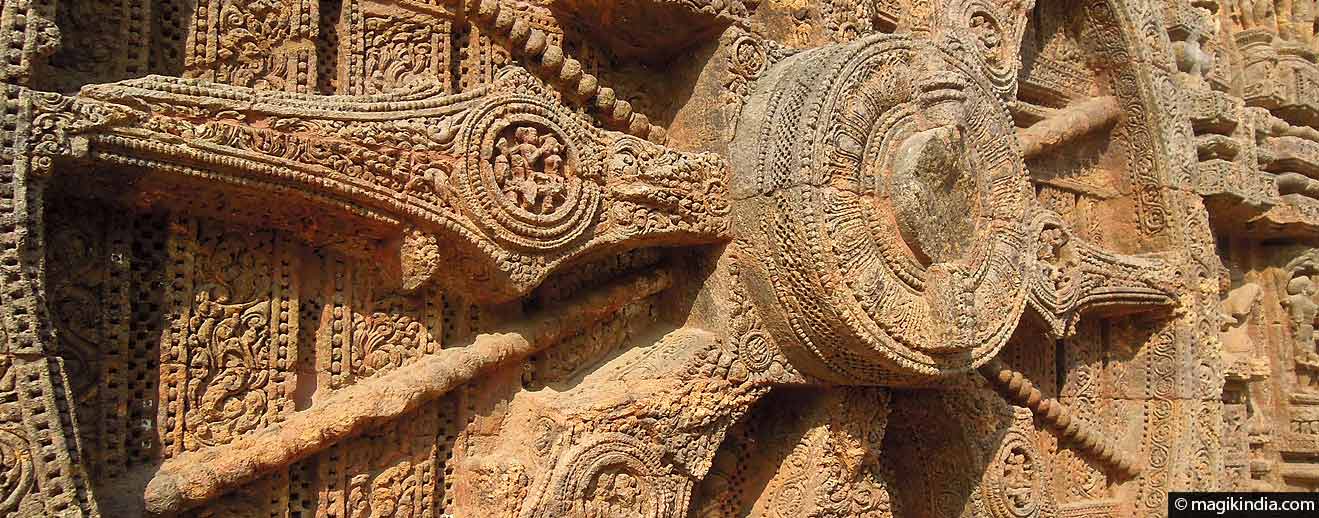
Konark, the magnificent sun temple of Odisha
 Konark and its Sun Temple – another of those wonders that only India can produce! This architectural exploit is an allegory of the passing of time. It is a World Heritage site – and a feast for the eyes.
Konark and its Sun Temple – another of those wonders that only India can produce! This architectural exploit is an allegory of the passing of time. It is a World Heritage site – and a feast for the eyes.
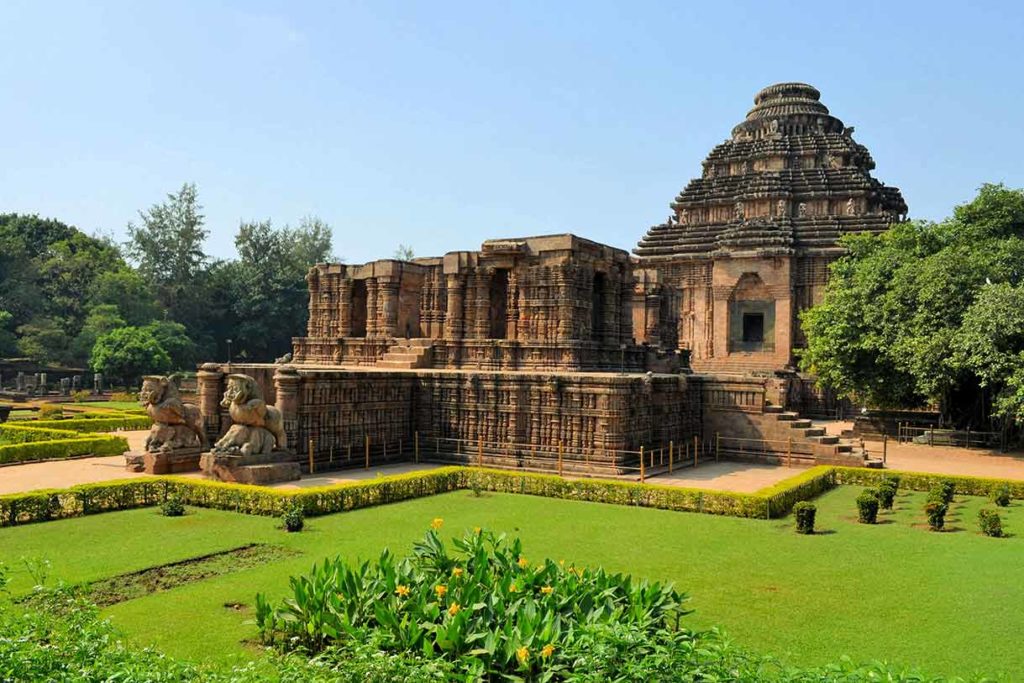
The name of Konark comes from the Sanskrit kona (angle) and arka (sun). The temple, which local fishermen would call the Black Pagoda, is dedicated to the sun god Surya. It was built in the 13th century, in the reign of King Narasimhadeva of the Eastern Ganga dynasty.

The temple represents Surya’s gigantic chariot with 12 pairs of finely sculpted wheels drawn by seven galloping horses (of which only one survives). Many of the temple’s features symbolise time and its passing:
It is oriented to the East so that the sun’s first rays strike its main entrance. The seven horses represent the seven days of the week and the 12 pairs of wheels the 12 months of the year, or the 24 wheels the 24 fortnights in the year. The wheels’ eight spokes represent the praharas or parts of the day.
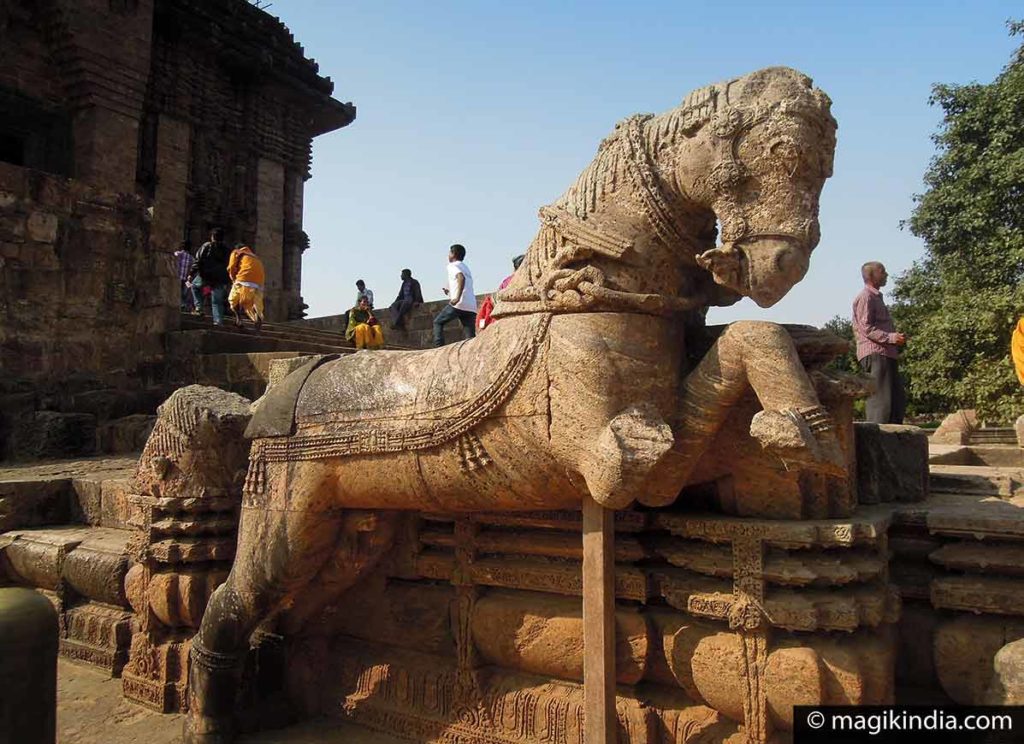
Entering the Sun Temple complex, we first come across the Natmandir (dance hall), now roofless, that rises on a high platform. Several frescoes describing artists, musicians and dancers are carved all around it.
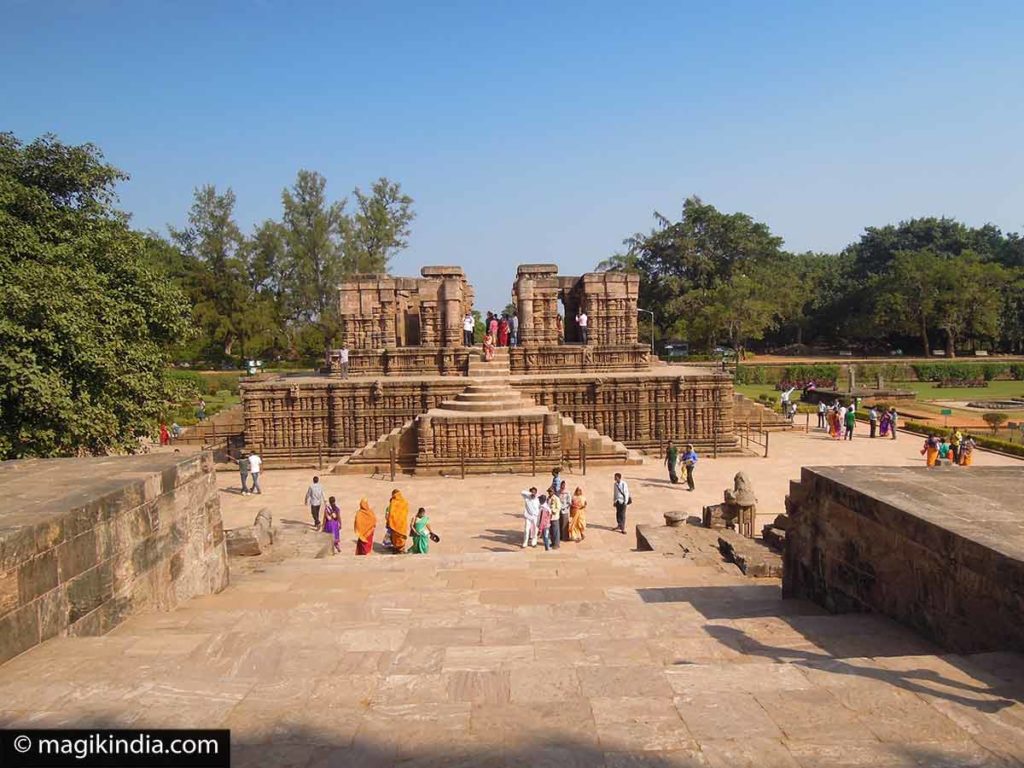
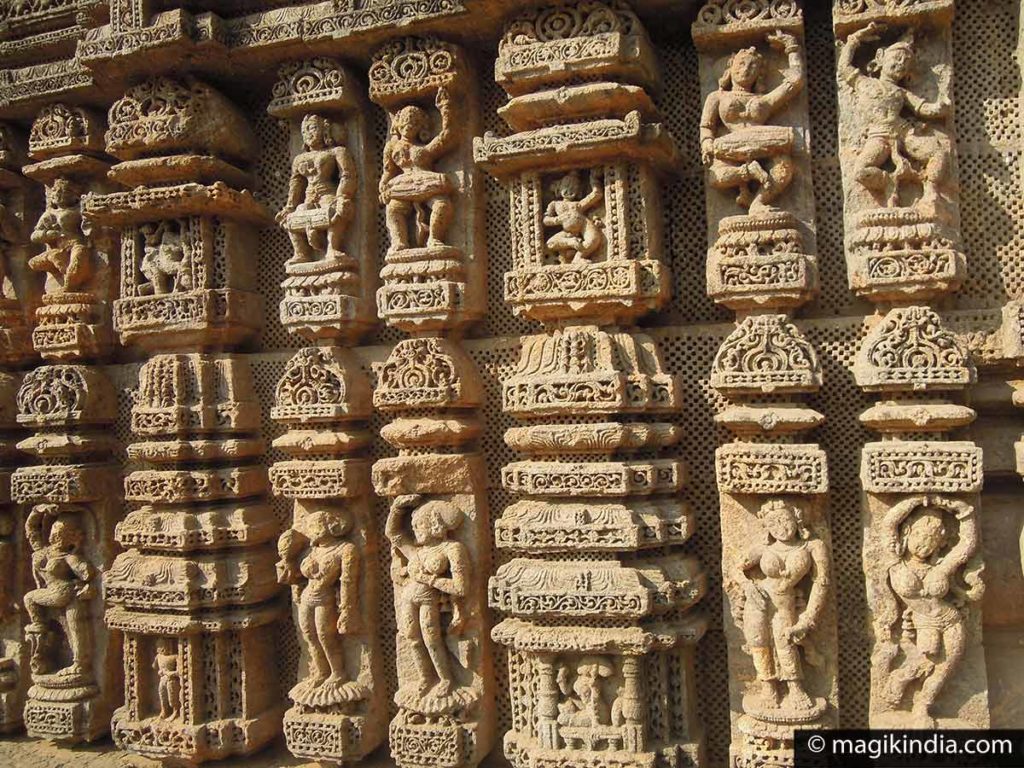
Just in front, wide stairs lead us to the Jaganamohana or meeting room. The deul (main shrine) including a high tower (shikhara) have not stood the test of time.
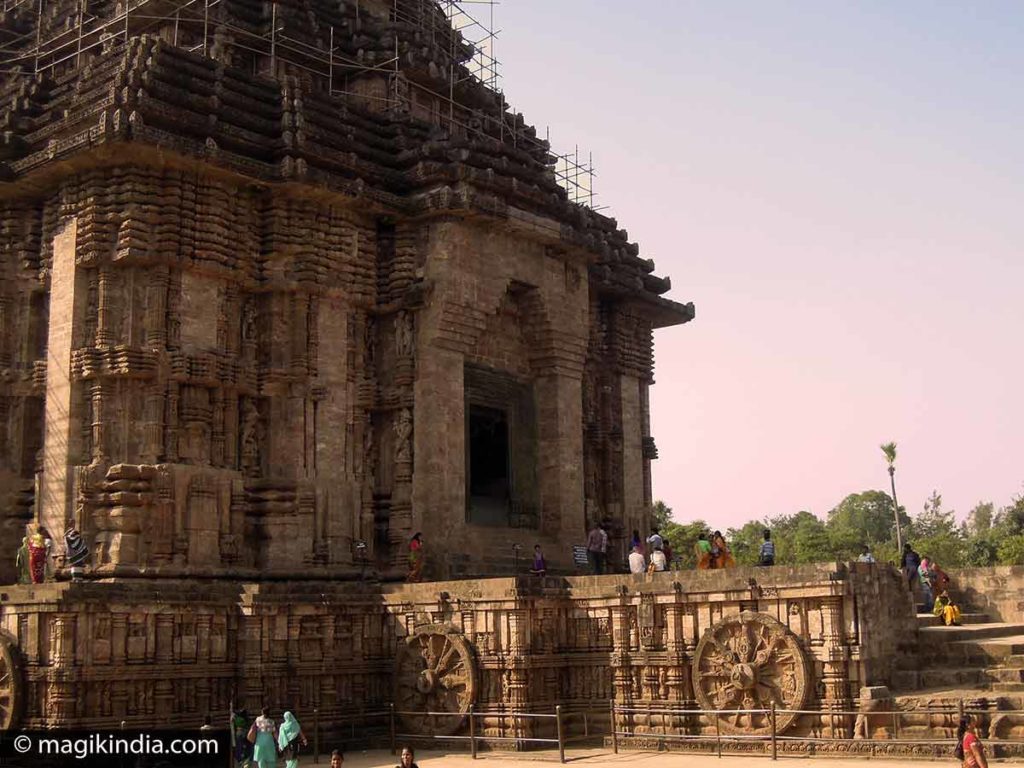
The wheels of the chariot are distributed all around the base of the Jaganamohana. Between these wheels, there is an abundance of figures of deities, floral motifs and mythical monsters. Each square centimeter is finely carved.
As is the case in many Hindu temples, you can also see erotic sculptures that can easily rival those at Khajuraho.
There are many theories to explain why sensual scenes are depicted on some of the Indian temples’ walls. One is that this erotic art symbolises the ecstatic joy of the soul experiencing the divine.
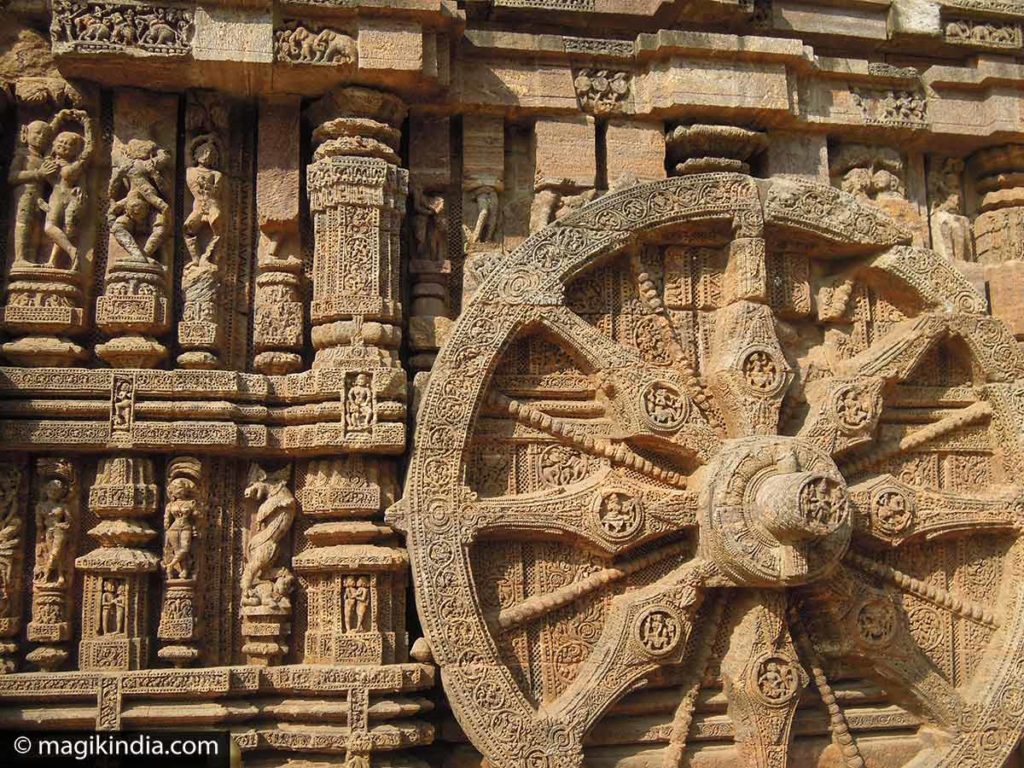
In the southern niche of the sanctuary, stands an imposing 3-meters high sculpture of the god Surya. Carved in chlorite, its particularity is that it wear boots, a rare fact in India for a deity. The explanation might come from external Asian influences.
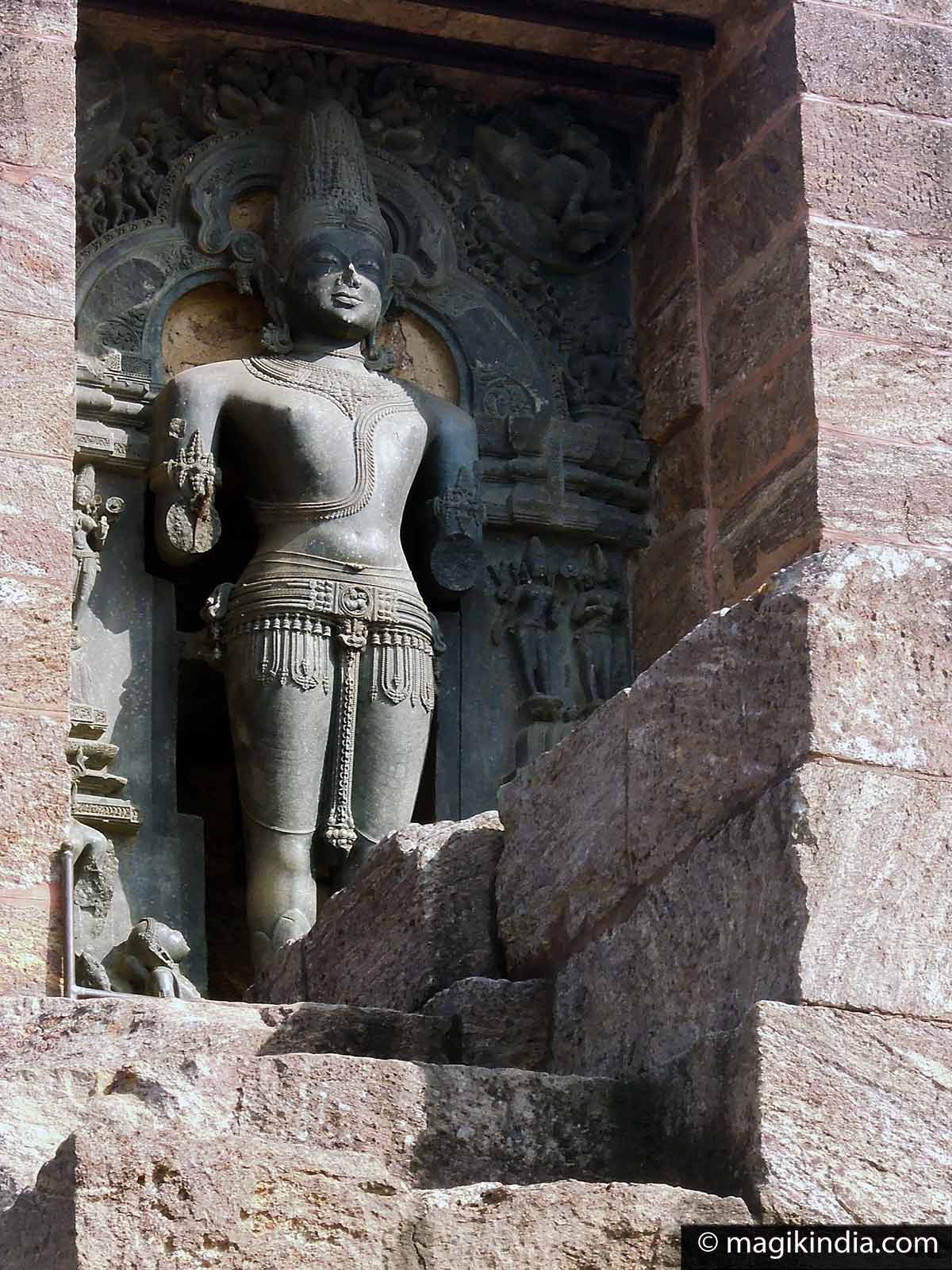
Other sculptures around the temple also deserve our attention such as two lions crawling on crouching elephants at the entrance of the natmandir and massive war elephants to the north.
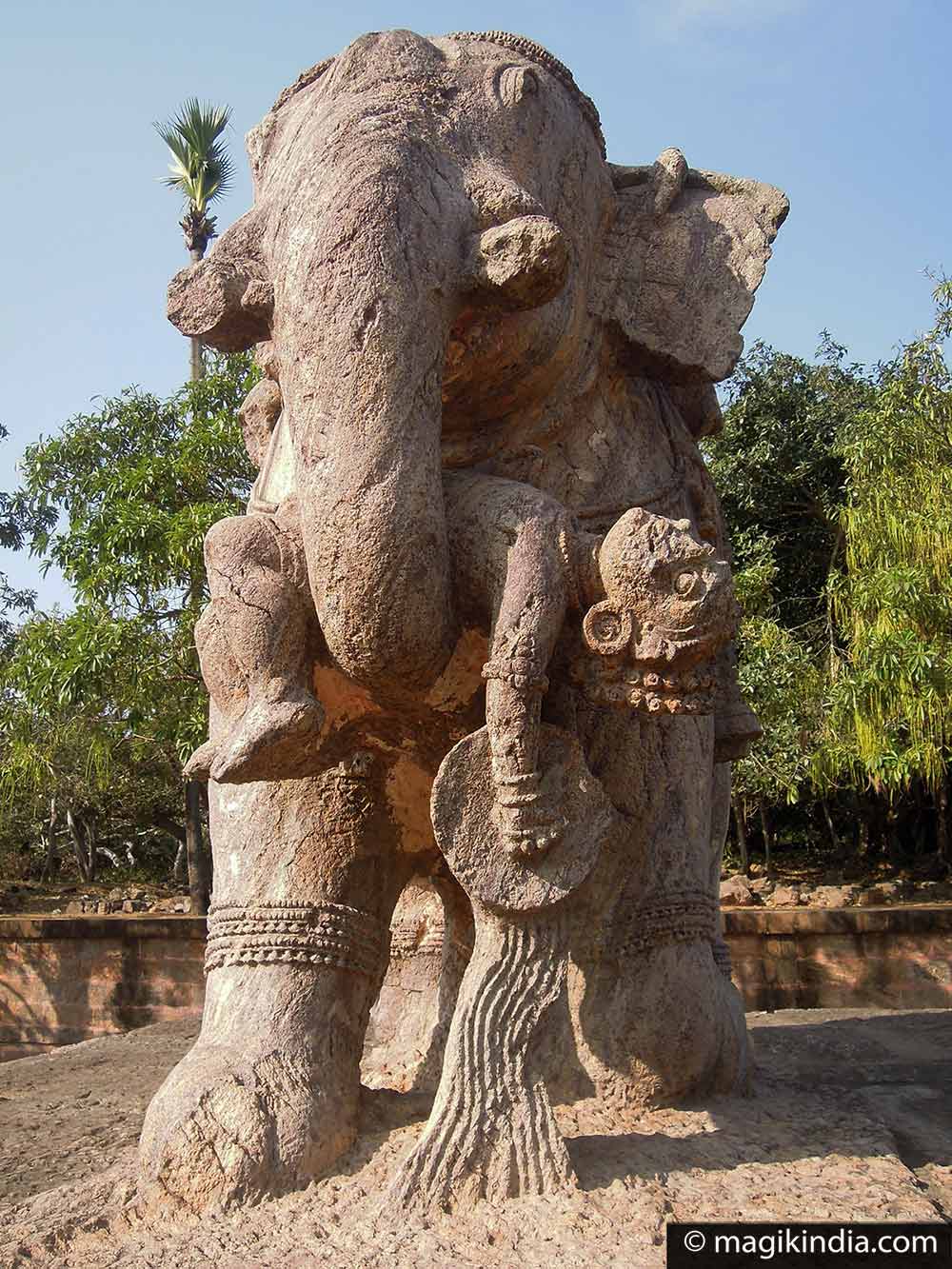
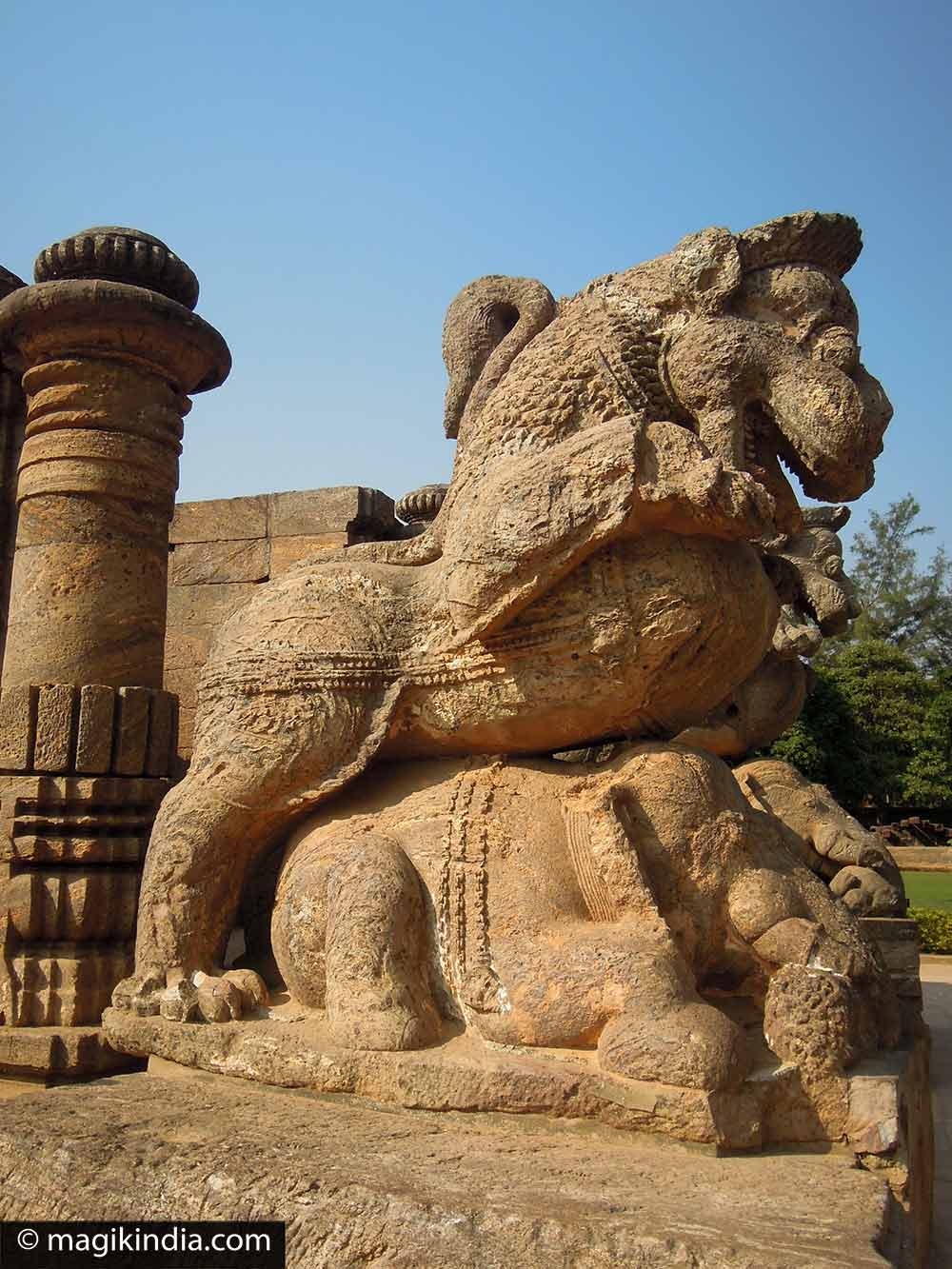
Konark dance festival
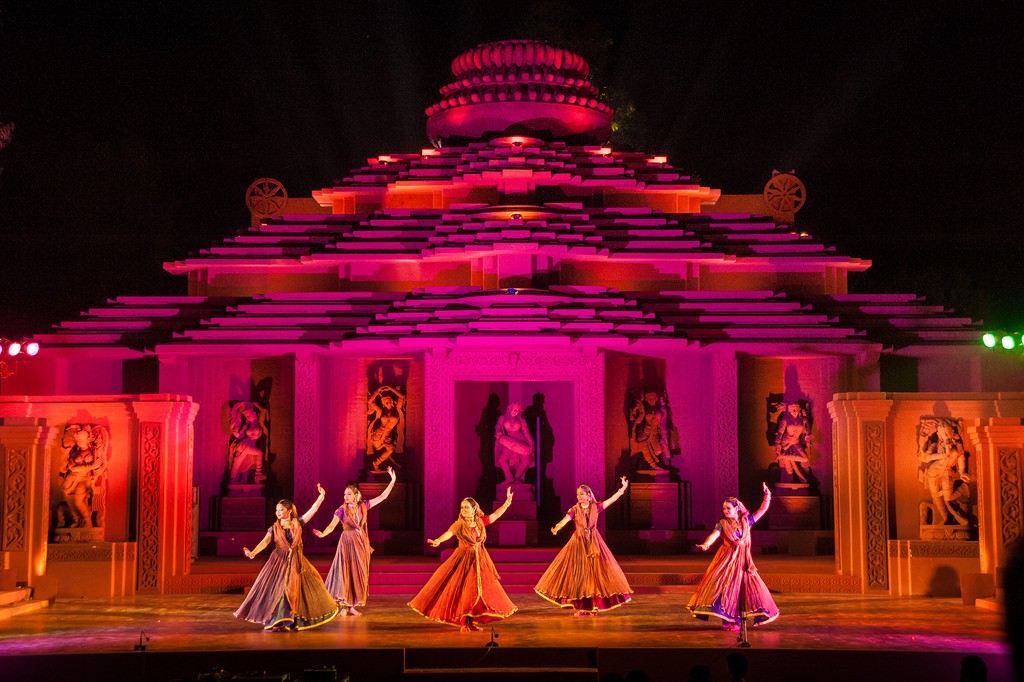
The festival of Konark is held every year in December in backdrop of the Sun temple in Konark. Many celebrated dancers from all over the country perform at this venue. Since 1989, this festival has been organized in the state jointly by Odisha Tourism and Odissi Research Centre to promote the diverse Indian dance heritage as well as the popularity of Konark Temple and Odisha as a tourist destination.
